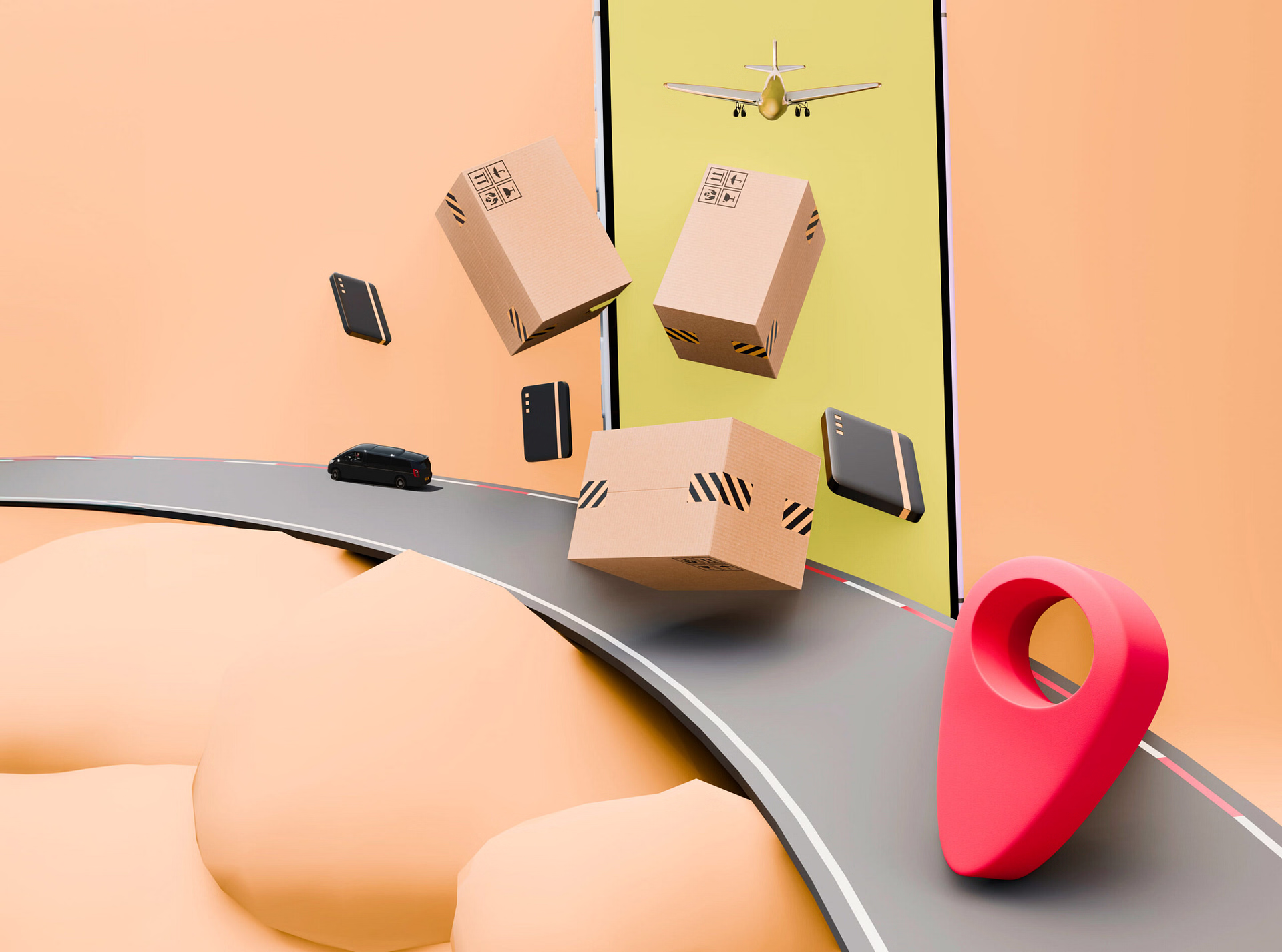Warum Postpakete die Logistik von Drittanbietern bei der Integration des E-Commerce-Versands übertreffen
E-Commerce-Marken stehen unter dem ständigen Druck, einen schnellen, zuverlässigen und erschwinglichen Versand zu bieten und gleichzeitig die Kunden zufriedenzustellen. Der Abbruch des Bestellvorgangs wird häufig nicht durch die Produkte, sondern durch Reibungsverluste beim Versand verursacht - unklare Kosten, begrenzte Lieferoptionen oder schlechte Nachverfolgung. Das ist der Grund Integration von E-Commerce-Versand ist ein Muss für wachsende Unternehmen.
Einzelhändler stehen heute vor der Wahl: Auslagerung des Fulfillments an Third-Party Logistics (3PL)-Anbieter oder Übernahme der Kontrolle mit Lösungen wie Postpaket, die eine direkte Integration und Automatisierung bieten. Der Vergleich zeigt, dass Postal Parcel mehr Kontrolle, Transparenz und Skalierbarkeit bietet. Für E-Commerce-Marken, die ein langfristiges Wachstum anstreben, kann sich dieser Unterschied in höheren Umsätzen und einer stärkeren Kundenbindung niederschlagen.
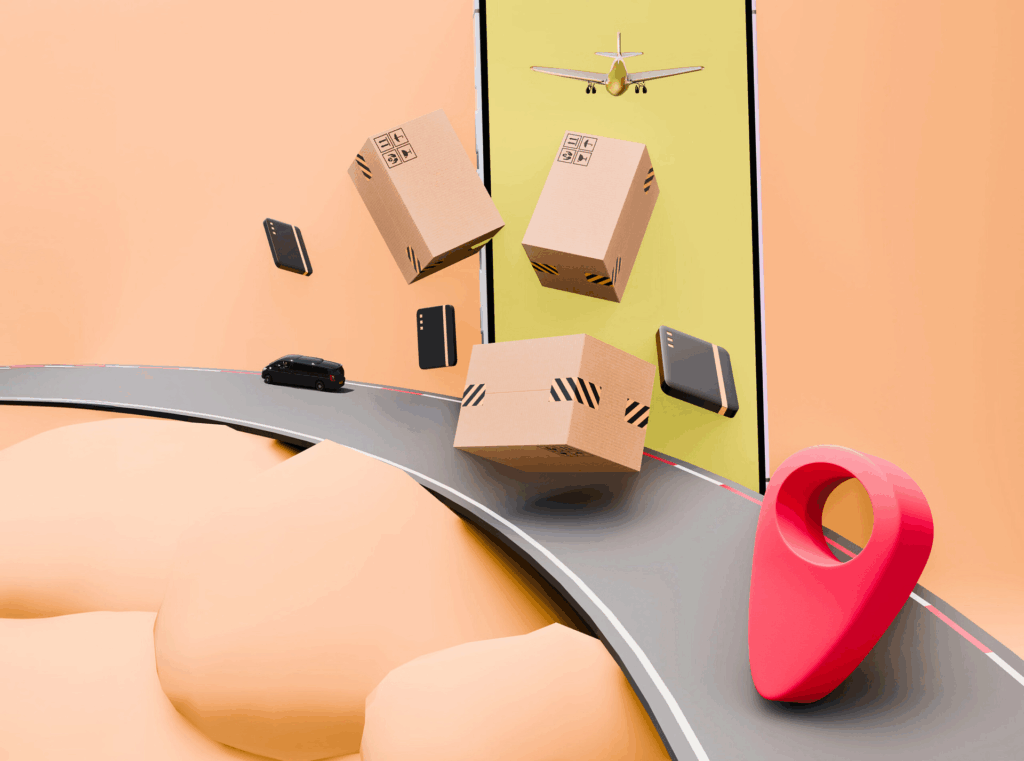
Was ist die Integration des E-Commerce-Versands und warum ist sie wichtig?
Warum ist Integration ein Wachstumsmotor?
Die E-Commerce-Versandintegration verbindet Online-Shops direkt mit Versandunternehmen und Logistik-Tools. Anstatt sich auf manuelle Prozesse oder Zwischenhändler zu verlassen, profitieren Unternehmen von der Automatisierung über den gesamten Lebenszyklus einer Bestellung. Ohne Integration haben Verkäufer oft Probleme mit:
- Manuelle Fehler bei der Erstellung von Versandetiketten
- Verzögerte Auftragsabwicklung bei Nachfragespitzen
- Unklare Versandkosten beim Checkout
- Fehlen einer zuverlässigen Nachverfolgung für die Kunden
Diese Probleme führen direkt zu mehr Kaufabbrüchen und negativen Kundenrezensionen. Wenn die Integration funktioniert, profitieren Käufer von genauen Preisen, schnellerer Lieferung und klarer Kommunikation. Das stärkt das Vertrauen und erhöht die Wahrscheinlichkeit von Wiederholungskäufen.
Warum wenden sich Unternehmen immer noch an 3PLs?
3PL-Anbieter versprechen Bequemlichkeit durch die Abwicklung von Inventar, Kommissionierung, Verpackung und Versand. Für einige kleine Teams mag dies attraktiv erscheinen. Der Preis dafür ist jedoch der Verlust der operativen Kontrolle und die Inkaufnahme höherer versteckter Kosten. 3PLs können zwar neuen Anbietern zu einem schnellen Start verhelfen, aber sie unterstützen selten eine nachhaltige Skalierung ohne Probleme.
Was sind die versteckten Nachteile der Drittanbieter-Logistik?
Reduzieren 3PLs die Kontrolle?
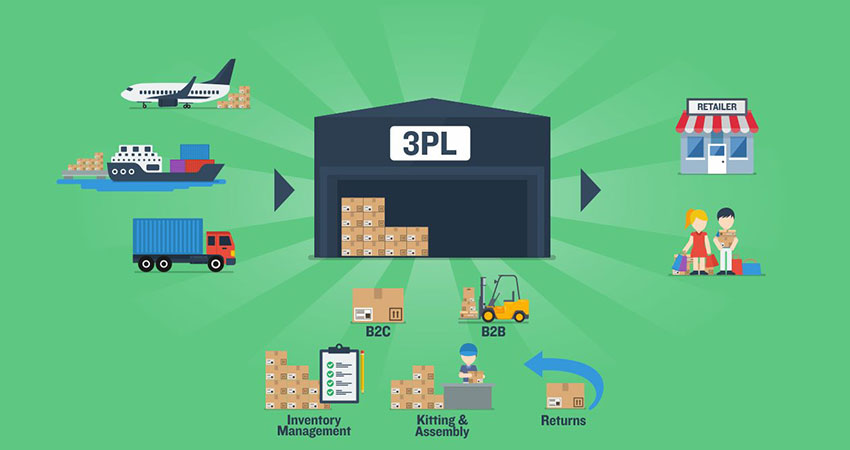
Ja. Bei 3PLs verlieren Marken die direkte Kontrolle darüber, wie Produkte gelagert werden, wie schnell Aufträge erfüllt werden und welche Spediteure eingesetzt werden. Wenn ein Lagerhaus Massensendungen oder langsamere Spediteure bevorzugt, leidet die Kundenzufriedenheit. Für Marken, die Wert auf Qualitätskontrolle legen, ist dieser Verlust riskant.
Gibt es finanzielle Risiken?
3PLs verwenden oft komplexe Preismodelle, die Lagergebühren, Bearbeitungsgebühren und Mindestbestellmengen beinhalten. Diese können:
- Verringerung der Gewinnspannen
- unvorhersehbare Ausgaben verursachen
- Einschränkung der Möglichkeit, Werbeaktionen oder Blitzverkäufe durchzuführen
Wenn das Auftragsvolumen wächst, können diese versteckten Kosten die Kosten für die direkte Verwaltung des Versands übersteigen.
Was ist mit dem Kundenerlebnis?
Die Schwächen von 3PL zeigen sich am deutlichsten bei Problemen mit dem Kunden. Verspätete Kommunikation, ungenaue Aktualisierungen der Sendungsverfolgung oder Fehler bei der Verpackung schaden dem Vertrauen. Ein negatives Versanderlebnis überwiegt in vielen Fällen die Produktzufriedenheit und treibt die Kunden zur Konkurrenz.
Warum Postpakete bei der Integration des E-Commerce-Versands gewinnen
1. Größere Kontrolle über die Erfüllung
Postpaket ermöglicht es Verkäufern, die Kontrolle über ihre Prozesse zu behalten. Bestellungen werden direkt synchronisiert, Etiketten werden automatisch erstellt, und die Unternehmen entscheiden, welche Transporteure sie verwenden möchten. Dies gewährleistet einheitliche Standards und ein besseres End-to-End-Erlebnis.
2. Echtzeit-Raten verbessern die Konversionen
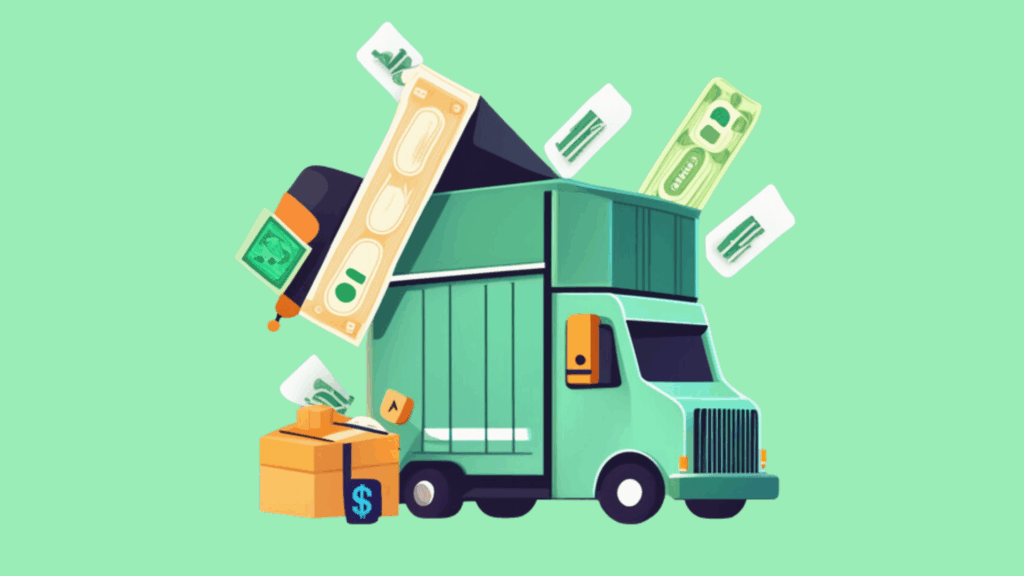
Einer der Hauptgründe für den Abbruch des Kaufvorgangs sind überraschende Versandkosten. Postal Parcel löst dieses Problem durch die Integration mit mehreren Versandunternehmen und die Anzeige der aktuellen Tarife an der Kasse. Die Kunden gewinnen Vertrauen, wenn die Kosten transparent sind, was den Abbruch des Kaufvorgangs um bis zu 20-25% reduziert.
3. Kosteneffizienz mit transparenter Preisgestaltung
Anders als bei 3PLs gibt es bei Postal Parcel keine versteckten Lagergebühren. Unternehmen zahlen nur für die tatsächlichen Versandkosten. Verkäufer können:
- Sofortiger Vergleich der Tarife von Anbietern
- Strategische Schwellenwerte für den kostenlosen Versand anbieten
- Sparen Sie Geld bei saisonalen Nachfrageschüben
4. Automatisierung für Skalierbarkeit
Mit zunehmendem Auftragsvolumen ist die manuelle Bearbeitung nicht mehr tragbar. Postal Parcel automatisiert:
- Erstellung von Etiketten
- Zollunterlagen
- Bearbeitung von Batch-Bestellungen
Das bedeutet, dass Unternehmen Tausende von Aufträgen ohne zusätzliche Personalkosten bearbeiten können, so dass die Auftragsabwicklung auch bei Wachstum zuverlässig bleibt.
5. Verbessertes Tracking schafft Kundenvertrauen
Postal Parcel integriert Echtzeit-Verfolgung direkt auf die Kundenkonten. Die Käufer werden in jeder Phase automatisch benachrichtigt. Dadurch werden Kundendienstanfragen um bis zu 40% reduziert und eine langfristige Loyalität aufgebaut.
6. Globale Expansion leicht gemacht
Grenzüberschreitende Verkäufe sind für das Wachstum des E-Commerce von entscheidender Bedeutung. Postal Parcel unterstützt den internationalen Versand mit automatischer Währungsumrechnung und Zollformularen. Marken können neue Märkte erschließen, ohne sich mit kompliziertem Papierkram oder hohen Outsourcing-Gebühren herumschlagen zu müssen.
Wie schneidet Postpaket in der Praxis besser ab als 3PLs?
Welche Unternehmen profitieren am meisten?
Postal Parcel ist eine gute Wahl für:
- Unabhängige E-Commerce-Geschäfte auf der Suche nach kosteneffizientem Wachstum
- Mittelgroße Marken, die ihr Auftragsvolumen schnell skalieren
- Unternehmen, die international expandieren wollen, ohne eine teure Infrastruktur aufzubauen
Fallstudie: Die Umstellung eines Modeeinzelhändlers von 3PL

Eine mittelgroße Bekleidungsmarke lagerte die Auftragsabwicklung an einen 3PL aus. Nach wiederholten Beschwerden über Lieferverzögerungen und überraschende Gebühren wechselte das Unternehmen zu Postal Parcel. Die Ergebnisse umfassen:
- 22% Reduzierung der Versandkosten
- 30% schnellere durchschnittliche Liefergeschwindigkeit
- Warenkorbabbrüche um fast 18% gesunken
Fallstudie: Skalierung auf internationaler Ebene
Ein Geschäft für technisches Zubehör wollte in fünf neue Länder verkaufen. Mit den integrierten Spediteuren von Postal Parcel und den automatisierten Zolldokumenten:
- Versandfehler verringert um 90%
- Lieferfrist um 3 Tage verkürzt
- Die Marke verdoppelte ihren Umsatz innerhalb eines Jahres
Vergleich Postpaket vs. 3PL Direct
| Merkmal | Drittanbieter-Logistik (3PL) | Postpaket |
|---|---|---|
| Kontrolle über das Inventar | Niedrig | Hoch |
| Transparenz bei den Versandkosten | Versteckte Gebühren üblich | Klare, aktuelle Tarife für Fluggesellschaften |
| Geschwindigkeit der Integration | Langsamer, vertragsbasiert | Schnell, softwaregesteuert |
| Verfolgung der Kommunikation | Indirekt, verzögert | Direkt, automatisiert |
| Internationaler Versand | Komplexe | Automatisierte Einhaltung |
| Skalierbarkeit | Teuer | Flexibel und effizient |
Häufige Bedenken über Postpakete
Ist es schwierig, sich zu integrieren?
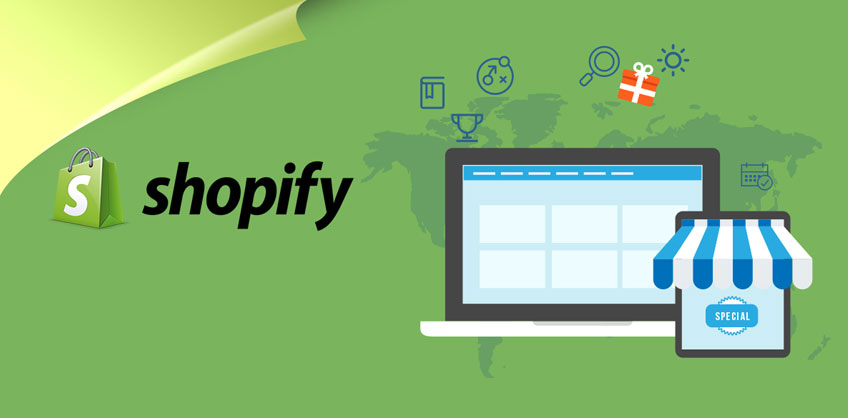
Nein. Postal Parcel lässt sich nahtlos mit den wichtigsten Plattformen wie Shopify, WooCommerce und Magento. Die Einrichtung dauert nur Stunden, nicht Wochen, und erfordert keine technischen Kenntnisse.
Kann es 3PL vollständig ersetzen?
Ja, für die meisten Unternehmen. Postal Parcel ermöglicht die volle Kontrolle über die Auftragsabwicklung ohne Outsourcing. Für Marken, die bereits an 3PL-Verträge gebunden sind, kann es neben den bestehenden Systemen eingesetzt werden und bietet einen schrittweisen Übergang.
Wird es für kleine Unternehmen funktionieren?
Auf jeden Fall. Kleine Geschäfte profitieren von niedrigeren Kosten und einer verbesserten Konvertierung an der Kasse, während größere Unternehmen von Automatisierung und Skalierbarkeit profitieren. Postal Parcel passt sich an beides an.
Warum Postpakete langfristig die klügere Strategie sind
Skalierbare Kosteneinsparungen
Die 3PL-Kosten steigen mit dem Auftragswachstum. Die Automatisierung von Postal Parcel sorgt dafür, dass die Kosten vorhersehbar und überschaubar bleiben und die Margen auch bei Umsatzspitzen geschützt werden.
Gestärkte Markenidentität

Bei Postal Parcel gehört jeder Berührungspunkt - von der Verpackung bis zur E-Mail-Nachverfolgung - zu Ihrer Marke, nicht zu einem Drittanbieter. Das stärkt die Wiedererkennung und Loyalität der Kunden.
Agilität in einem wettbewerbsorientierten Markt
Der Einzelhandel ist schnell. Lange Verträge und starres Outsourcing schränken die Flexibilität ein. Postal Parcel gibt Unternehmen die Freiheit, neue Märkte zu testen, Werbeaktionen zu starten und den Betrieb ohne Einschränkungen zu erweitern.
Schlussfolgerung
Integration von E-Commerce-Versand ist das Rückgrat einer modernen E-Commerce-Strategie. Logistikanbieter von Drittanbietern bieten zwar Bequemlichkeit, sind aber mit versteckten Kosten, langsameren Reaktionszeiten und weniger Kontrolle verbunden. Postal Parcel beseitigt diese Probleme mit direkter Integration, Echtzeit-Preisen, automatisierten Prozessen und zuverlässiger Verfolgung.
Das Ergebnis liegt auf der Hand: weniger Warenkorbabbrüche, bessere Kundenerfahrungen und Umsätze, die sich im Vergleich zu 3PL-abhängigen Modellen verdoppeln können. Für E-Commerce-Marken, die auf Wachstum ausgerichtet sind, ist Postal Parcel der intelligentere, nachhaltigere Weg nach vorn.
Erfahren Sie mehr über E-Commerce-Integrationslösungen, die für schnell skalierende Marken entwickelt wurden, unter PostalParcel.
Einblicke in die Industrie
Nachrichten über den Posteingang
Nulla turp dis cursus. Integer liberos euismod pretium faucibua

